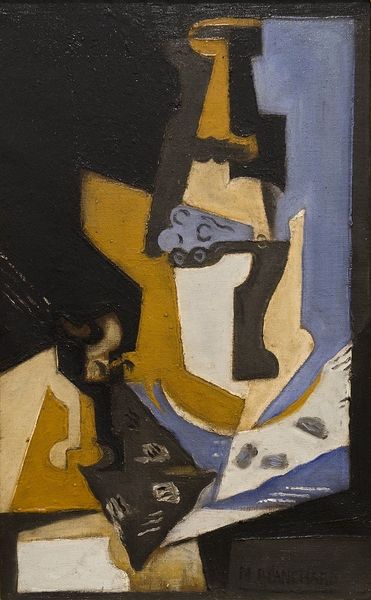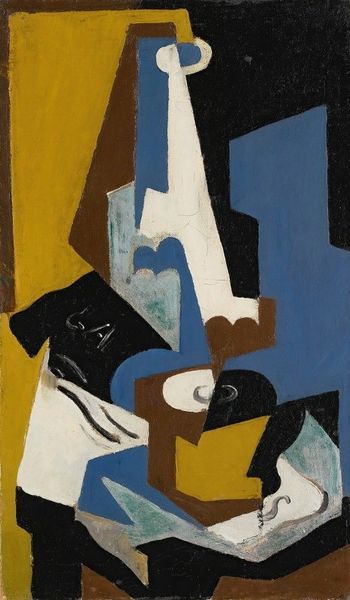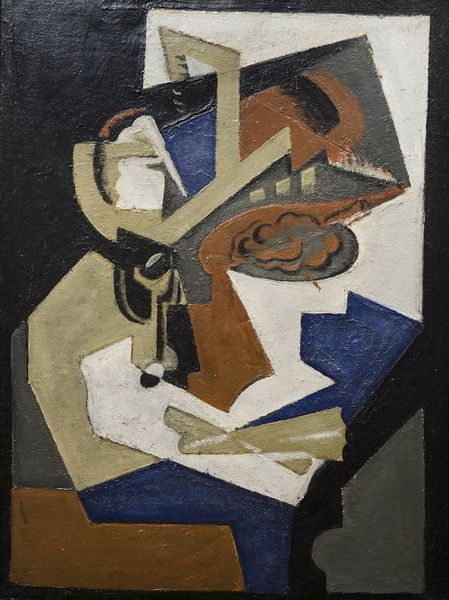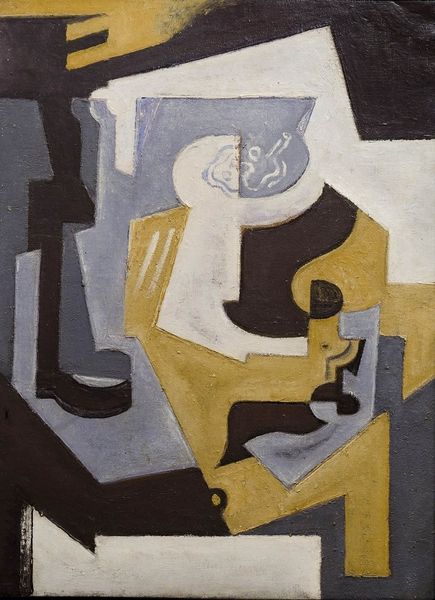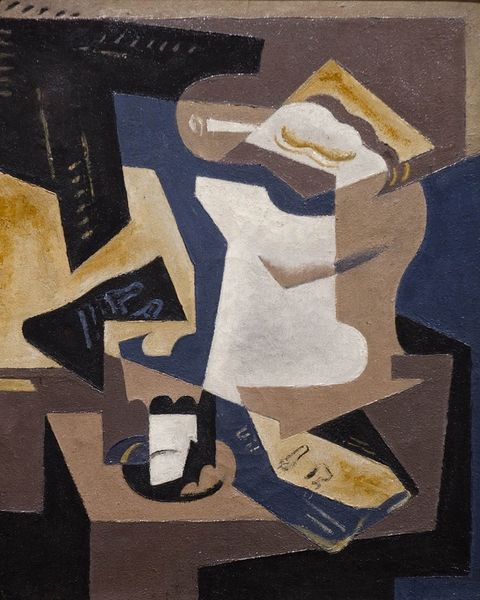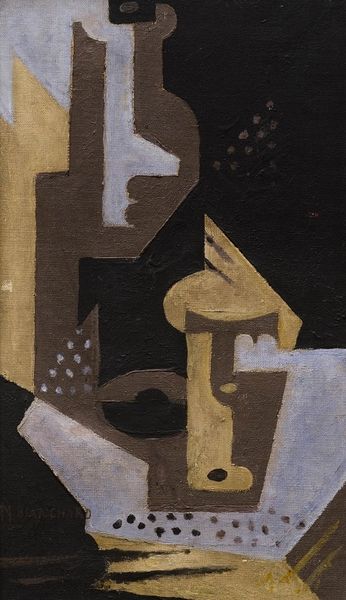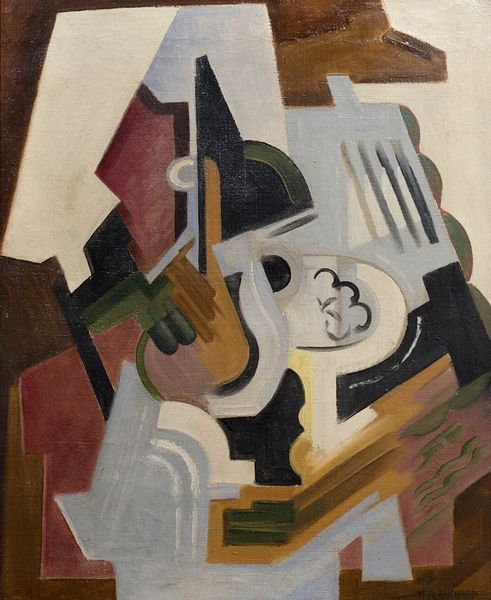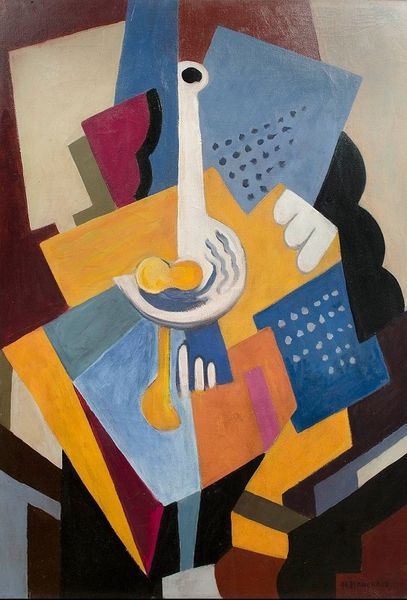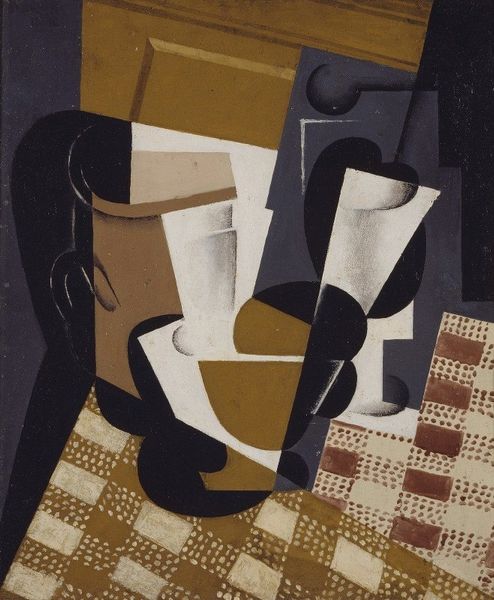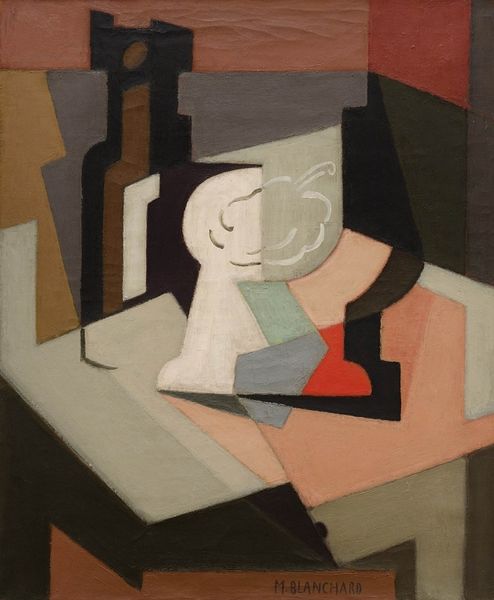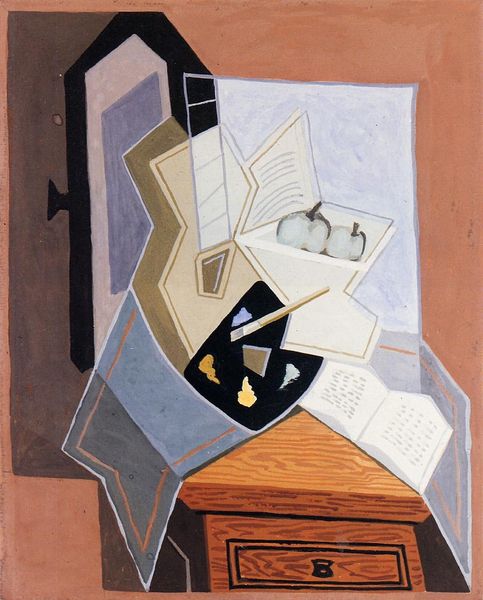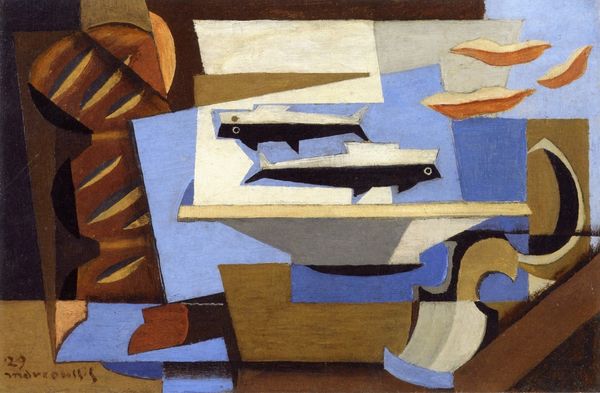
painting, oil-paint
#
art-deco
#
cubism
#
painting
#
oil-paint
#
oil painting
#
geometric-abstraction
#
abstraction
#
modernism
Copyright: Public domain
Curator: It feels grounded, almost architectural, despite the fractured perspective. Editor: We’re standing before "Cubist Composition/Still Life," an oil painting created in 1918 by María Blanchard. It's a strong example of her engagement with Cubism, exploring how geometric abstraction can deconstruct reality. Curator: Looking at the layering of forms and textures, one can imagine the careful preparation involved—each stroke, each calculated plane. The oil paint itself lends a weightiness that contrasts with the lightness typically associated with still lifes. What do you make of her material choices in this context? Editor: I'm particularly drawn to Blanchard's negotiation of gender within this modernist framework. Early 20th-century artistic circles were heavily male-dominated. Consider the power dynamics in place as a woman pushing the boundaries of representation amidst a revolutionary movement largely defined by her male peers. Blanchard was an active participant of that transformation. Curator: The textures, the specific kind of blues and browns used – are evocative of industry. It also begs the question how Blanchard might've utilized accessible, locally available resources while making art at this period, in contrast to some male counterparts, maybe? How did these things inform her final aesthetic, its perceived values and, ultimately, our consumption of this piece now? Editor: Right. She certainly confronted numerous socio-economic challenges in a war-torn Europe; ones undoubtedly reflected in the restrained palette and compositional frugality apparent throughout this painting. Art production in this setting was itself a radical act of defiance and determination. In our attempt to understand this composition we also begin to get at the story of her experience as a queer artist. Curator: It all comes down to materiality—Blanchard worked *with* oil paint, embracing a raw visual language that's very much indicative of modern practices, whereas maybe others treated paint differently, aspiring instead toward a traditional "illusion." And it also resonates at a bodily, visceral level, doesn’t it? We are compelled to think about how labor manifests in an abstract still life. Editor: Exactly, her commitment pushes back against prevailing constructs that attempted to restrict the potential of women at that time, creating space for a queer vision to emerge, even within abstraction. Thank you, this analysis sheds such necessary light on the nuances of Blanchard's powerful contribution. Curator: Agreed, seeing this Cubist composition, understanding it through this new lens, provides a whole new appreciation for its lasting relevance, no?
Comments
No comments
Be the first to comment and join the conversation on the ultimate creative platform.
